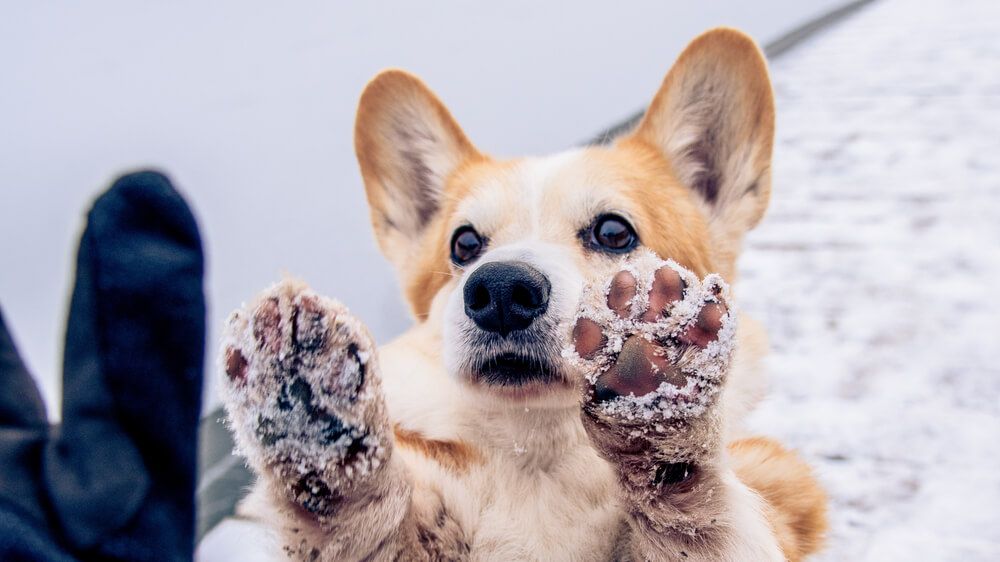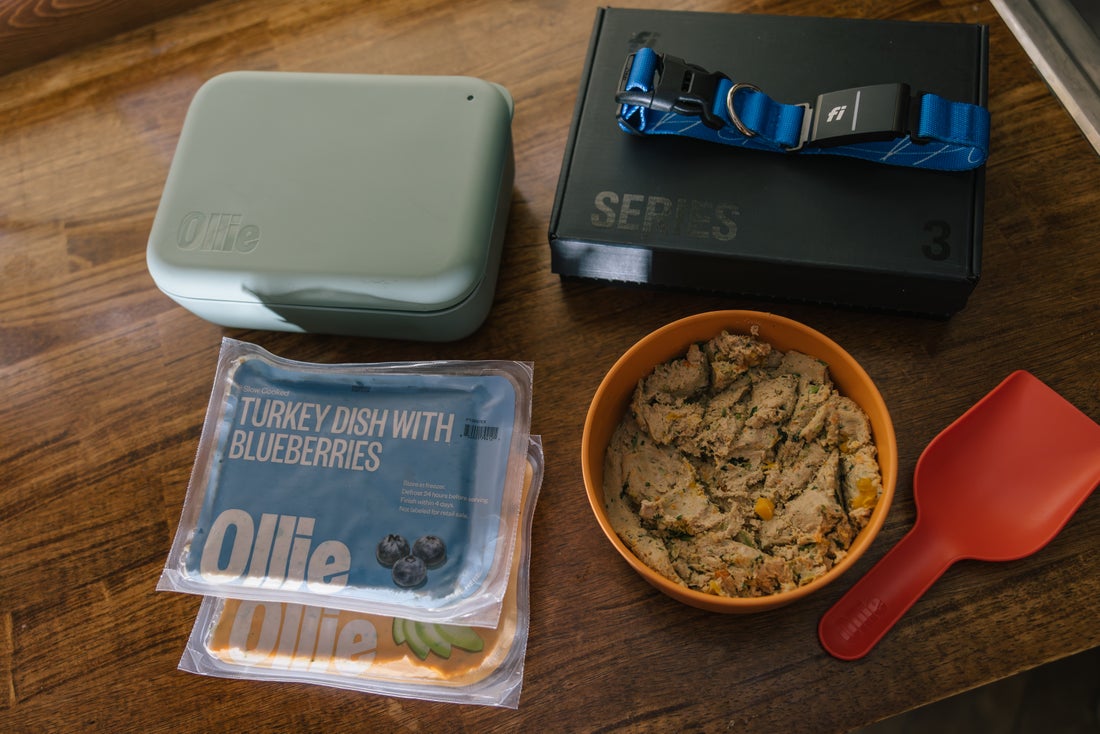Hey Ollie blog readers! We’re offering you an exclusive 60% OFF your starter box! Try now!
Baby, it’s cold outside! Even if your pup’s tail starts wagging the minute you mention a walk, that doesn’t mean he’s ready to deal with salty sidewalks and freezing temperatures. “While some breeds are better equipped for cold weather than others, dogs are just as sensitive to the cold as we are,” says Dr. Jeanne Budgin, a veterinarian based in New Jersey. While your pup probably isn’t complaining, the snow, ice, and salt may actually be doing some damage to his paws. Since you can’t keep your dog locked up indoors until spring, we asked Budgin to explain exactly how to keep their paws healthy this season.
Protect your pup’s paws from the elements
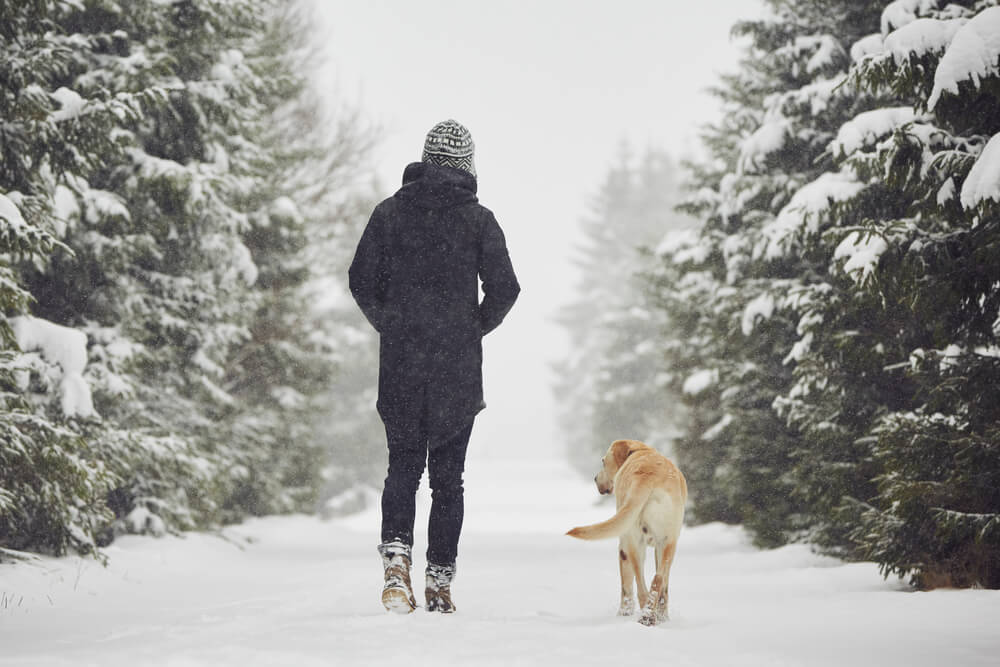
To prevent dry, cracked pads, Budgin suggests massaging petroleum jelly or another product designed to specifically to protect paws into your dog’s paw pads before and after walks to help them retain moisture. Popular products include Musher’s Secret and Natural Dog Company’s Organic Paw Soother.Look for a product that is wax-based, which will form a barrier between the paws and the ice and salt, she says. After a walk, be sure to wipe your dog’s paws with a warm washcloth to remove any snow, ice, or salt before applying another layer of wax. It’s also important to keep the fur around your pup’s pads short to prevent the accumulation of snow and ice, which can be painful. Even if you are allowing your pup to grow their coat out in the winter, chat with your dog’s groomer about keeping their paw pads and the bottoms of their feet nicely trimmed. This will go a long way when helping to keep ice, snow and salt out of their feet!
Are dog booties a good option for my dog?
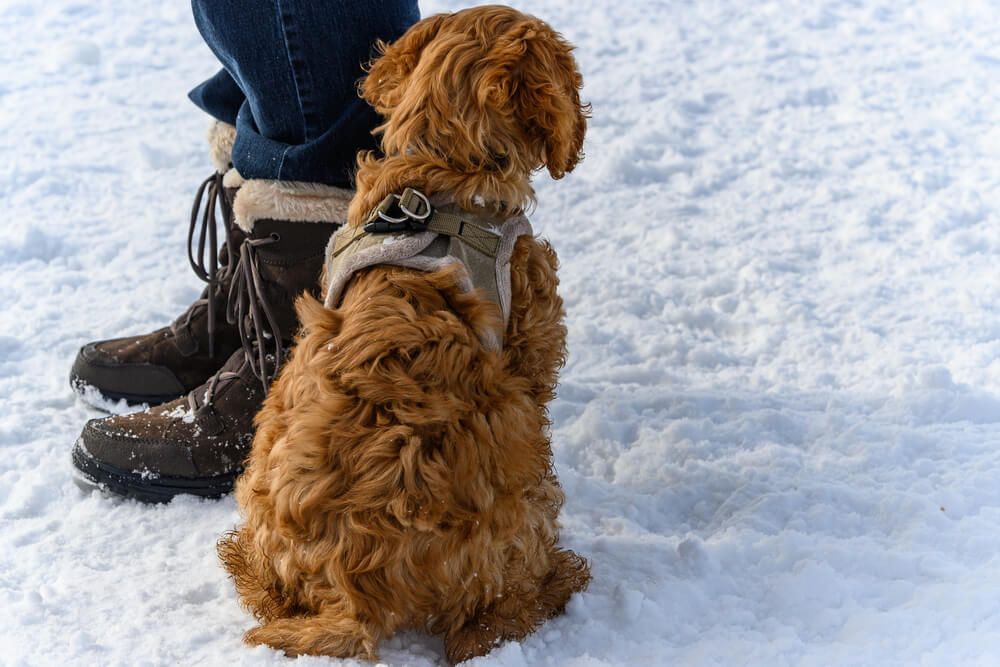
Dog boots can be a good option for some dogs (if they’ll keep them on their feet!). They shield your dog’s paws from the elements and keep them warm and dry. “Booties also provide protection against Ice Melt products, which are often used in excess by well-intending neighbors and can irritate your dog’s paws,” notes Budgin. They’re especially good for active dogs, who may get lacerations from running on icy surfaces, and older dogs, who have brittle nails and suffer from osteoarthritis, which makes them more prone to slipping, Budgin says.
How do I get my dog to wear boots?
Getting your pup to wear boots on their feet isn’t as simple as slapping them on before a walk. Some dogs find them a little overwhelming at first. Like this guy and these pups who make for some fun YouTube videos.
To set your pup up for success with their boots, you’ll want to start training with them before you actually need them. You might even want to order a few sizes/styles to see what your pup feels best in. Think about your own winter boots, its probably taken you a few tries to find just the right ones. If cost is an option check out the company’s return policy or consider donating any boots your pup dislikes to a local shelter. Someone there will get good use out of them.
Have your pup try on the boots at home. Pick a quiet time of the day when your pup isn’t anxious to get out for a potty break. Slowly put the boots on your pup and offer praise and rewards for their cooperation. If you your pup tries to run away or is showing signs of stress, you can stop and try again later. Some dogs don’t love having their paws handled a lot and the boots might be a big adjustment. This might take a few sessions to get all four boots on.
Once your pup has gotten all four feet into their boots, let them take a few test walks inside before wearing them outside.
Create and after-walk ritual to keep your pup’s paws clean (your floors and furniture will thank you)
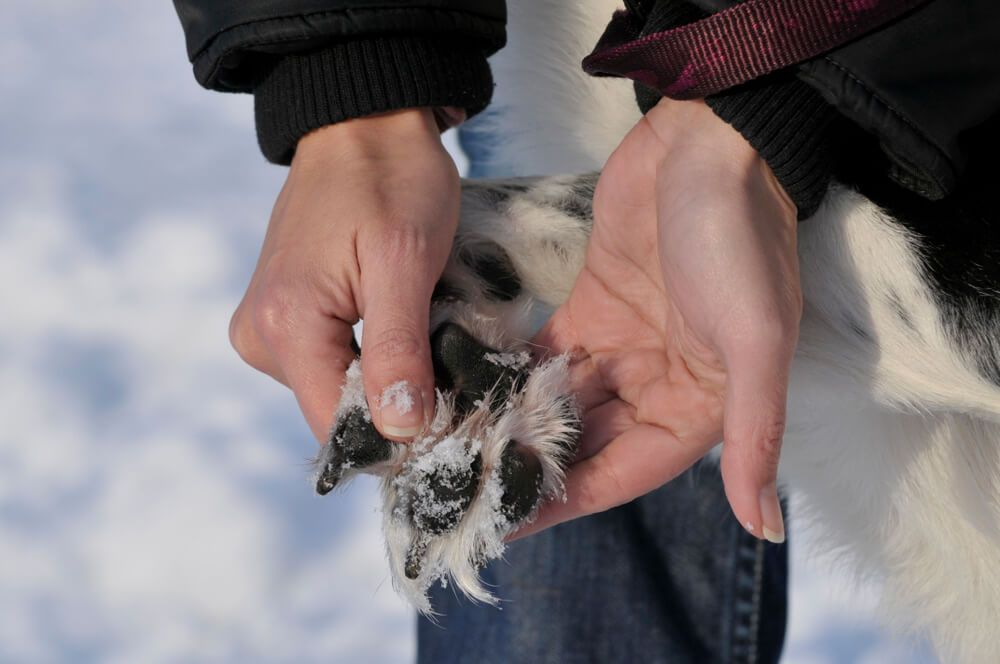
Chances are, if there was snow or ice, your dog probably stepped in salt, which contains sodium and calcium chloride. These products can irritate the paws, causing redness and dryness, and are also toxic if ingested, Budgin says. While your pup probably won’t want to eat them, they will want to clean off their paws which they do by licking. This means they could ingest these chemicals that will make them sick!
To keep your pup’s paws clean and prevent this from happening, we recommend you create a post-walk ritual.
Before you head out for your walk place a clean towel by the door where you will come in. If you’re able to have this area be near a sink. If not, you could also leave a bowl of warm water by your towel. This way you and your pup don’t have to walk through the house with dirty and wet feet to grab your supplies.
Remove your boots (and your pups if they’re wearing them) and wipe your pups feet and legs off. You also might want to wipe their bellies if it was really wet out as a mixture of snow and salt could have also found its way there. Use the warm water to wet a clean piece of the towel to remove any extra salt.
Make sure your pup is clean and dry. You can reapply your dog’s paw protectant if they are using it to end your post walk ritual.
Not only will wiping off at the door keep your pup’s feet healthier it will also prevent salt and other debris from being tracked through your home. This hopefully will save your some time with the housework throughout the winter and give you more time for the fun stuff – like playing with your pup.
The Ollie blog is devoted to helping pet parents lead healthier lives with their pups. If you want to learn more about our fresh, human-grade food, check out MyOllie.com.
Tagged As:

The nutrition your dog needs,
the food they want.

Enjoying our articles? Subscribe our Newsletters and get new articles directly to your inbox
You might also like
9 October 2025
4 MINS READ
How Fresh Food Can Help Soothe Your Dog’s Allergies
As a pup parent, watching your dog suffer from the constant discomfort of allergies is always distressing. The endless scratching, irritated skin, and digestive upset can take a toll on your pup�…
by Ollie Pets
18 September 2025
4 MINS READ
Is Fresh Dog Food Easier to Digest?
Yes, fresh dog food is generally easier for dogs to digest than highly processed kibble. Because it’s made with whole ingredients, gently cooked, and free from unnecessary fillers, fresh food supp…
by Ollie Pets
18 September 2025
5 MINS READ
Can I Rotate Fresh Dog Food Flavors?
Yes, it’s safe to rotate fresh dog food flavors, and many dogs actually benefit from the variety. At Ollie, we offer multiple fresh recipes, like Beef, Chicken, Turkey, Lamb, and Pork so you can…
by Ollie Pets
